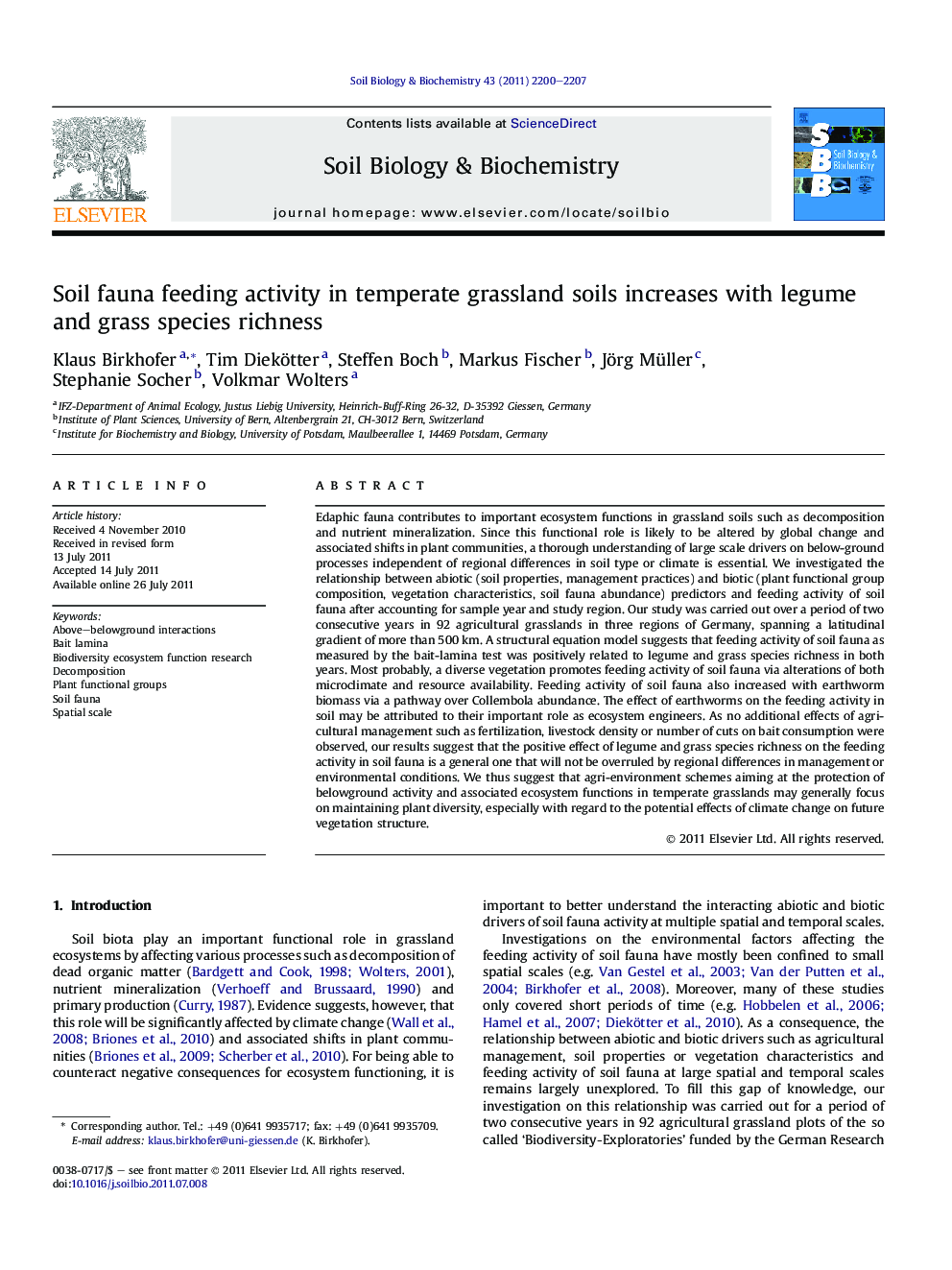| Article ID | Journal | Published Year | Pages | File Type |
|---|---|---|---|---|
| 2025094 | Soil Biology and Biochemistry | 2011 | 8 Pages |
Edaphic fauna contributes to important ecosystem functions in grassland soils such as decomposition and nutrient mineralization. Since this functional role is likely to be altered by global change and associated shifts in plant communities, a thorough understanding of large scale drivers on below-ground processes independent of regional differences in soil type or climate is essential. We investigated the relationship between abiotic (soil properties, management practices) and biotic (plant functional group composition, vegetation characteristics, soil fauna abundance) predictors and feeding activity of soil fauna after accounting for sample year and study region. Our study was carried out over a period of two consecutive years in 92 agricultural grasslands in three regions of Germany, spanning a latitudinal gradient of more than 500 km. A structural equation model suggests that feeding activity of soil fauna as measured by the bait-lamina test was positively related to legume and grass species richness in both years. Most probably, a diverse vegetation promotes feeding activity of soil fauna via alterations of both microclimate and resource availability. Feeding activity of soil fauna also increased with earthworm biomass via a pathway over Collembola abundance. The effect of earthworms on the feeding activity in soil may be attributed to their important role as ecosystem engineers. As no additional effects of agricultural management such as fertilization, livestock density or number of cuts on bait consumption were observed, our results suggest that the positive effect of legume and grass species richness on the feeding activity in soil fauna is a general one that will not be overruled by regional differences in management or environmental conditions. We thus suggest that agri-environment schemes aiming at the protection of belowground activity and associated ecosystem functions in temperate grasslands may generally focus on maintaining plant diversity, especially with regard to the potential effects of climate change on future vegetation structure.
Graphical abstractFigure optionsDownload full-size imageDownload as PowerPoint slideHighlights► Feeding activity of soil fauna is positively related to species richness of legumes in grasslands. ► Feeding activity also increased via a positive relationship between earthworms and Collembola. ► No effects of management or soil properties on feeding activity were observed at large spatial scales.
